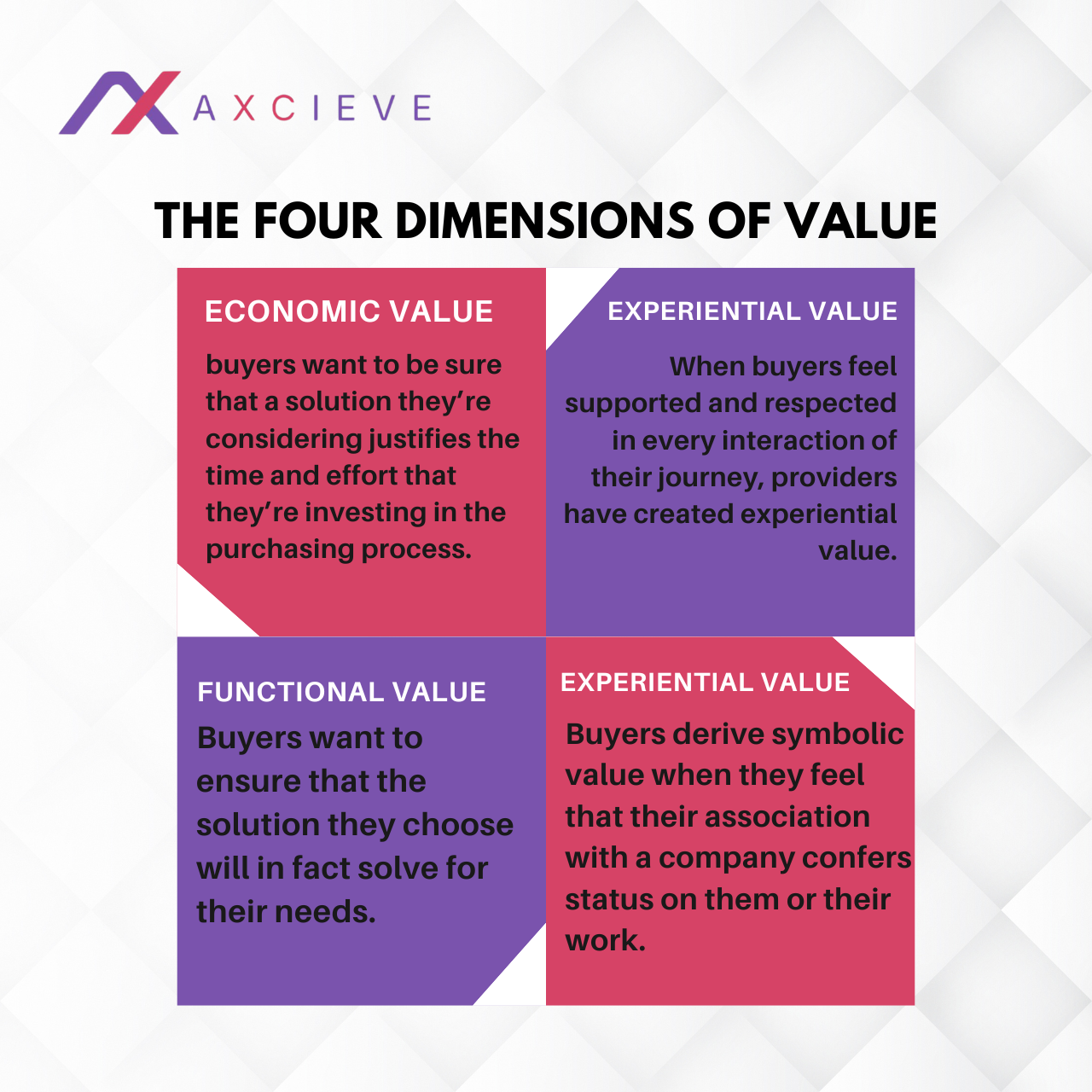B2B Businesses and marketers recently have been continuously updating their go-to-market strategies to fit the fast-moving market and high competition. But sometimes they get lost in the variety of things they can leverage to optimize the outcomes of their efforts and resources.
In 2023, Forrester Published a handbook “Fuel Growth Through
Customer-Centered Alignment” that provided useful content and statistics for B2B marketing leaders. But the most interesting page for me was the Four Dimensions Of Value.
The four dimensions of value explain how B2B buyers evaluate solutions based on multiple factors beyond just price and features. Understanding and leveraging the four dimensions of value can help businesses optimize their go-to-market (GTM) strategies and improve customer acquisition and retention.
In this blog post, we are discussing what are the Four dimensions of value, how to integrate them into the GTM strategy, What are the use cases for B2B SMBs and what are the next best actions to take.
1. The Four Dimensions of Value
Economic Value:
Ensuring that a solution justifies the buyer’s investment of time, effort, and money. Companies create economic value by making information easily accessible, demonstrating ROI, and streamlining the decision-making process. Marketers play a critical role by providing sales teams with relevant insights and data-driven resources.
Functional Value:
Focusing on whether the solution effectively addresses customer needs. Businesses establish functional value by understanding buyer challenges, refining product offerings, and ensuring continuous value post-purchase through customer support and updates.
Experiential Value
Is built through a seamless and supportive customer journey. Buyers value interactions that are efficient, transparent, and user-friendly. Companies enhance experiential value by simplifying the buying process, providing dedicated support, and ensuring a frictionless experience from onboarding to retention.
Symbolic Value
The status and recognition buyers gain from associating with a brand. Customers derive symbolic value from industry credibility, professional development opportunities, and access to exclusive communities. Businesses can create symbolic value by offering certifications, thought leadership content, and networking opportunities.
2. How to Integrate These Dimensions into a GTM Strategy
A company’s GTM strategy should align its marketing, sales, and customer success efforts with these four dimensions to enhance buyer engagement and satisfaction.
To create economic value, businesses can offer ROI calculators, transparent pricing, and detailed case studies demonstrating measurable benefits. Data-driven insights should be leveraged to justify costs and illustrate long-term value.
For functional value, companies can ensure their solutions directly address customer pain points. This can be achieved through in-depth customer research, personalized onboarding, and continuous product improvements. Providing self-service resources and responsive customer support further strengthens functional value.
Enhancing experiential value requires a streamlined and intuitive buying journey. Companies should focus on user-friendly platforms, interactive demos, and proactive customer support. Clear communication and a seamless onboarding experience contribute to a positive perception of the brand.
To establish symbolic value, businesses can position themselves as industry leaders by creating exclusive communities, offering certifications, and recognizing customer achievements. Thought leadership initiatives, such as webinars and industry reports, also reinforce credibility and expertise.
3. Use Cases for B2B SMBs
1- A digital invoicing platform demonstrates economic value by offering a cost-savings calculator, showing SMBs how automation reduces manual effort and late payments.
2- Axcieve’s AI Sales enablement platform enhances functional value by integrating AI-driven lead scoring, allowing SMBs to prioritize high-value prospects efficiently.
3- A marketing automation platform improves experiential value by offering a guided onboarding process, live support, and an intuitive user interface.
4- A cybersecurity firm creates symbolic value by launching an exclusive community where SMBs gain recognition for implementing best security practices.
4. Best Next Actions for B2B SMBs
To strengthen economic value, businesses should develop ROI calculators, provide transparent pricing models, and create case studies that highlight tangible benefits.
To enhance functional value, companies must prioritize customer feedback, refine product features, and offer personalized onboarding experiences.
To improve experiential value, organizations should simplify the sales process, provide seamless customer support, and ensure intuitive user interfaces.
To build symbolic value, businesses can establish customer communities, offer professional certifications, and position clients as thought leaders through case studies and recognition programs.
By incorporating these four dimensions into their GTM strategies, B2B SMBs can differentiate themselves in competitive markets, drive higher customer engagement, and build lasting relationships.





